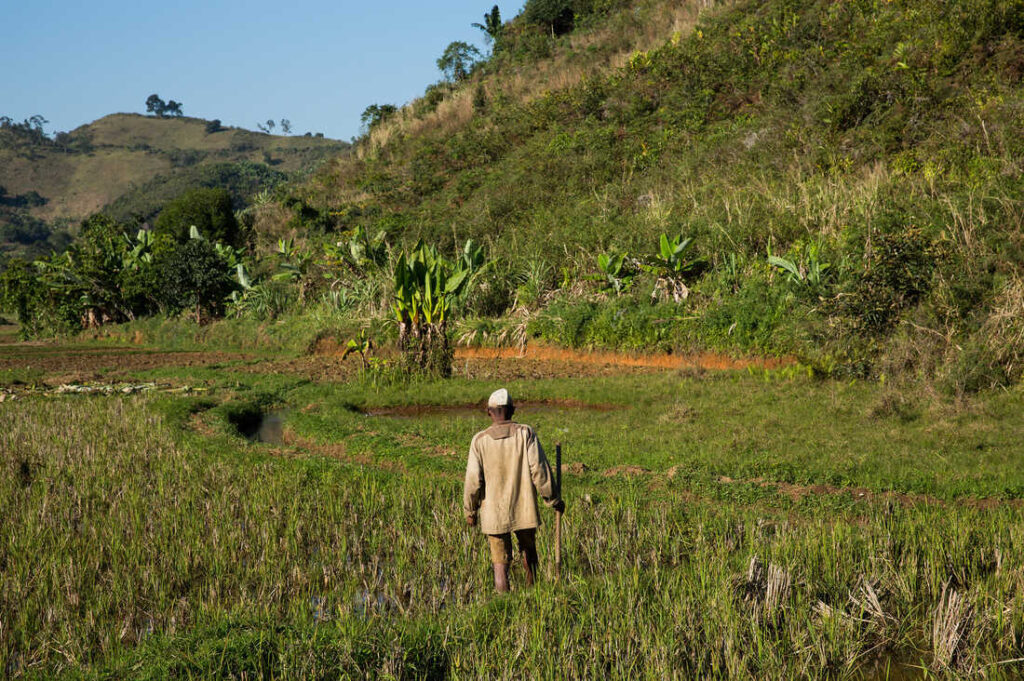Food & Climate
Crop farming in Madagascar is expanding after land tenure rights were documented, with a sense of security leading to focus and reduced conflict.
The Food and Agriculture Organization of the United Nations (FAO) has outlined the story of how farmers are expanding crop farming in Madagascar, a country in southeast Africa, after helping the country address a challenge that has been holding farmers back for decades: obtaining legal rights to their land, according to a statement obtained by “Food & Climate” platform.
On the fertile island of Madagascar, more than 85% of the population relies on agriculture for their livelihoods.
When certified by the authorities, these land property rights are crucial for securing legal protection against rival claims. They are also critical for giving them the confidence to invest in these lands and access loans from financial institutions, which may require land as collateral.
Crop farming in Madagascar under the previous regime
Madagascar relied on an outdated land tenure system made of fragile and fading pieces of paper stacked on high shelves in dusty offices.
Securing a legal land title was a cumbersome, lengthy and costly procedure that left millions of farmers unable to prove that the land they worked was theirs. This system often resulted in recurrent land conflicts, a lack of investments in agricultural land and low economic productivity.

In 2016, the Investment Centre of the Food and Agriculture Organization of the United Nations (FAO) provided technical assistance to the World Bank in the Madagascar Agriculture Rural Growth and Land Management project, known in brief as CASEF.
Having identified land ownership reform as offering significant benefits to smallholder farmers, the $105 million project included a component to assist Madagascar in creating a modern land register using digital technology and formalizing ownership for a large number of farmers. Madagascar’s overarching aim is to issue 8 million certificates by 2030.
FAO used its experience with similar projects in Latin America to develop an appropriate methodology for facilitating land tenure recognition, including an approach for systematic land registration, the development of tools to manage the information and the training of staff in national institutions and those in charge of local land offices.
Hundreds of land para-surveyors were employed, and more than 400 municipal land offices were set up to make requesting certificates easier for farmers.
Farmers are still issued paper documents, but the certificates now feature a QR code that links to their digital version, which will be stored in a national register once the system is fully implemented. The project also provided computers to the local offices for this digital registration and solar panels to boost the energy grid and connectivity.
Work with peace of mind
The new tenure system has increased smallholder farmers’ sense of security, reduced conflict between neighbors, slashed the cost of each certificate from $ 600 to $ 32, and reduced the time it takes to process files from 6 years to 6 months.
To date, the project has certified 1.1 million parcels, benefiting 206 000 households, covering the equivalent of 10% of the rural plots in Madagascar.
For a sense of scale, the Government has now been able to distribute as many land certificates in four years and 6 regions as were issued in the entire country in the previous 17 years.
The project has succeeded in expanding crop cultivation in Madagascar. Rasolofo Andrianoarintsoa, a farmer based in Ambatotsipihana, a rural community south of the capital Antananarivo, says: “For so many years, I had no legal document proving ownership of my land. So, when we heard about the ‘land certificates operation,’ we applied, and we now fully enjoy our rights,” he says about the new system.
Rasolofo used his certificate as a guarantee to buy fertilizers for his crops and to obtain credit from microfinance institutions.
“They value land certificates enormously because oxen or carts or motorcycles can die or break down, which is not the case with land certificates,” he says, explaining why financial institutions are keen to use land as collateral.
“As a result, our income has increased because we were able to expand our fields and diversify our crops with corn and soybeans. We are more confident because the land belongs to us.”

Razanamanana Philippine, a widowed bean farmer, echoes these sentiments. She says that the land certificate has provided her with peace of mind and allowed her to double the amount of land she can cultivate.
In just a few years, digitization and the decentralization of certificate administration through communal land offices have led to a fivefold increase in smallholder land registrations for parcels under 10 hectares and promise even more success in the future.

